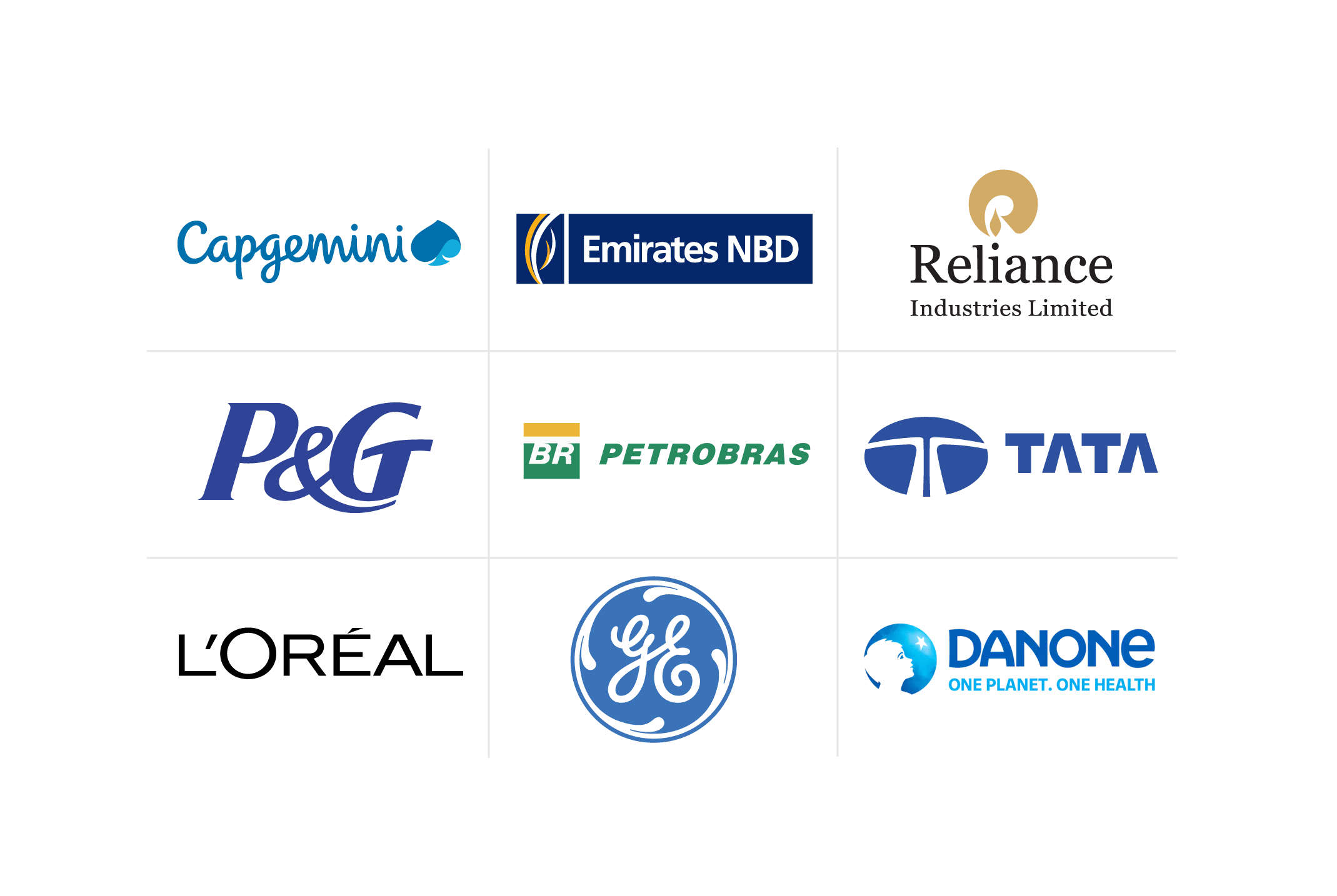How to Write OKRs: A Step-By-Step Guide
Follow these five steps to discover how to write OKRs to drive your company forward.
![[Featured Image] A small group of employees engages in student-centric learning at their workplace.](https://d3njjcbhbojbot.cloudfront.net/api/utilities/v1/imageproxy/https://images.ctfassets.net/2pudprfttvy6/1NUnm9Zw8G9EGCAt06QVqC/6d5542bdab374e5998fff11490a1a282/GettyImages-576902990.jpg?w=1500&h=680&q=60&fit=fill&f=faces&fm=jpg&fl=progressive&auto=format%2Ccompress&dpr=1&w=1000)
OKRs, or objectives and key results, are a goal-setting technique that allows you to define clear objectives with specific measurables to track results. You can use OKRs at various business levels, whether your focus is learning and development, increasing sales, improving employee or customer retention, or growing your business. The spirit of OKRs is when you identify measurable goals for your company, create alignment, and encourage collaboration to pursue and achieve those objectives.
According to Amazon, OKRs are essential for your company because they “are like the trophy at the end of a long tournament that the team wants to win. They provide a measurable target for an organization, team, or individual to hit [1].” OKRs are now used and championed by businesses worldwide, including by Google, Allbirds, and Netflix.
Discover the critical attributes of OKRs and follow this step-by-step guide to learn how to write OKRs that are effective in supporting your company or organization and how to overcome any challenges.
Defining OKRs and their purpose
OKRs are a framework for defining your goals and measuring your progress. However, before you can understand what you use OKRs for, it’s helpful to examine their definition in more detail and get a sense of how you might implement OKRs into company strategies.
Objective: What you are aiming to achieve—your goal. For example, the objective of a general manager of an NBA team might be to make the owner lots of money.
Key results: This provides details about the measurement you will use to define whether you meet your objective. For example, the key results for achieving this objective might be winning an NBA championship and selling 90 percent of the tickets to every game during the season.
Your objective can be anything you want it to be, but it usually pertains to a company-wide or team goal. OKRs are an excellent way of building a framework for a group to follow and work together on a common goal. OKRs keep each division throughout your company focused on taking the necessary steps to achieve the desired objective.
Your key results must be clear and measurable—either quantitative (90 percent ticket sales) or qualitative (winning an NBA championship). You can’t have any ambiguity here, as you either meet key results or you don’t.
Read more: OKRs vs. KPIs in Company Performance Management
How to structure your OKRs
You have two primary ways to structure OKRs, both of which are relatively straightforward. First, you can write it as a statement, such as:
“We will (objective) as measured by (key results).”
Or, you can structure it in a list format. For example:
Objective: We will …
Key results: List up to three
Example 1
We will increase our tech division's artificial intelligence skill set by having each current employee earn an AI certification, hiring three new employees with AI backgrounds, and purchasing the best AI software.
Example 2
Objective: Increase the tech division’s artificial intelligence skill set.
Key Results:
Each current employee earns an AI certification
Hire three new employees with AI experience
Purchase and implement effective AI software
However you choose to structure your OKRs, they must be clear, specific, and measurable. It’s also helpful to review them periodically—some organizations do so weekly—and adjust them as needed, which is why it’s also essential for OKRs to
Read more: Effective OKR Examples for Companies
Step-by-step guide to writing effective OKRs
Follow our step-by-step guide to writing effective OKRs by first aligning your objectives with company strategy. Also, ensure your objectives and key results are impactful, relevant, clear, and easy to measure, with team buy-in and a clear timeline.
1. Align OKRs with company strategy
For OKRs to be effective, they must make sense in the context of your organization. Your objective must align with company goals and strategy so it seems an obvious fit to all involved and so that people feel motivated to work together to achieve a shared, relevant goal. When setting an objective, think about how it fits into the company's overall mission and what you are trying to achieve. Each OKR needs to contribute to the overall success of the company.
2. Define clear and ambitious objectives
It’s essential to create easy-to-understand objectives so that everyone knows the goal they are setting out to achieve. Be very specific to avoid any ambiguity and keep objectives concise. Having clear objectives means everyone knows what management expects of them.
When writing objectives, consider how they will motivate and inspire your team. Practical objectives are realistic but challenging and typically involve change beyond normal business operations. You want people to feel motivated by your goals, so they need to see that they are achievable, which is more likely to compel them to put in the work.
3. Choose the right key results
When choosing your key results, make sure they are measurable. They can be quantitative or qualitative, but you must be able to measure whether the individual, team, or company has met the goals. While considering if you met a KR, it’s imperative to be able to answer “yes” or “no.” For example, you may have a quantitative key result such as “increase sales by 10 percent” or a qualitative result such as “assess customer pain points,” which you can measure in several ways, including feedback, a survey, and customer reviews.
Another critical element is the number of key results you include for each objective. Too many results to measure makes it complicated, and an insufficient number means you might be unable to accomplish your objective. Around three key results per objective is a good number to aim for. The quality of your key results is integral to understanding the progress made toward your objective, the level of commitment from your team, and their effectiveness. You can use the key results to hold team members accountable, measure their performance, and make necessary adjustments.
Read more: Using Key Performance Indicators for Business Success
4. Ensure company-wide alignment
OKRs ensure uniformity across a team or organization when working towards a common goal or objective. Furthermore, the clarity of an OKR allows everyone to know what they are aiming for, thus creating more alignment between team members, which saves time and resources. Also, when you utilize OKRs to establish a clear representation of success, your employees will likely feel more aligned in pursuing this goal, contributing to worker retention. It also encourages collaboration between individuals and teams. It inspires a sense of interconnectedness, which can help employees understand the importance of their responsibilities and how their efforts affect their coworkers.
Using OKRs should help propel the company forward in meeting its vision and organizational priorities. Next, consider establishing a clear time frame for accomplishing your key results. Having a deadline can allow you to remain aware of your progress while sticking to the overall plan for achieving your objective.
5. Set realistic time frames
As with any goal, setting a time frame is important for OKRs. Having an appropriate time frame helps your department utilize resources effectively while keeping the overall pursuit of your objectives on track. Also, when establishing your time frame for completing the goals, you can choose from a variety of options, such as quarterly, yearly, or an approach in which you frequently reassess and update your objectives.
One way of doing this is to use an OKR cycle. An OKR cycle outlines the timeline from setting objectives to achieving results. For example, if your OKR cycle is quarterly, you might set objectives before the start of the quarter, review progress weekly throughout the quarter, and complete an evaluation at the end of the quarter. Use the SMART analogy when setting your OKRs—specific, measurable, achievable, relevant, and time-bound.
Overcoming challenges and resistance
When introducing OKRs to an organization, you may find some resistance from staff, which you will need to overcome. Essentially, OKRs are about making changes, and people can resist change. For your OKRs to be effective, it is critical to involve the entire team.
Firstly, it is important to embed OKRs into the working culture so staff members see them as an integral part of their work and performance management. Start small, with easily achievable goals, so that your employees can understand what it feels like to use OKRs successfully. You can also build OKRs into already established routines, which can make it easier for your employees to form new habits. For example, maybe you implement OKRs to steer the focus of a management meeting.
OKRs for performance management
Over time, OKRs can help you manage your organization's performance. Although OKRs are not meant to measure individual performance, you can review the key results to determine your team's overall progress.
You can also set learning OKRs with key results focused on having your team learn something within a set time frame. Additionally, in terms of professional development, your learning and development team can establish goals for your employees, which keeps the employees and the executives informed and on track with overarching company objectives. You may also use OKRs for career development by setting personal OKRs aligned with your organization's goals.
Read more: What Is Performance Management?
Getting started with Coursera
OKRs are excellent tools for organizations to set goals and monitor progress. Writing OKRs involves careful consideration to ensure that objectives and key results are clear, achievable, measurable, timely, and aligned with company ethos.
Enable your employees to analyze and interpret data to drive faster, better business decisions with the Data & Analytics Academy from Coursera. Offering hands-on learning and expert instruction from leading organizations like Stanford, Google, Microsoft, Meta, the University of Michigan, and more, Coursera’s Data & Analytics Academy empowers employees at every level to build foundational data literacy while also equipping existing data teams with expert-level training in machine learning, AI, and other emergent fields. Explore Coursera for Business to learn how we can work together to build data proficiency across your organization.
Article sources
1. Amazon Ads. “What are OKRs (objectives and key results)?, https://advertising.amazon.com/library/guides/objectives-and-key-results.” Accessed August 28, 2024.
This content has been made available for informational purposes only. Learners are advised to conduct additional research to ensure that courses and other credentials pursued meet their personal, professional, and financial goals.


